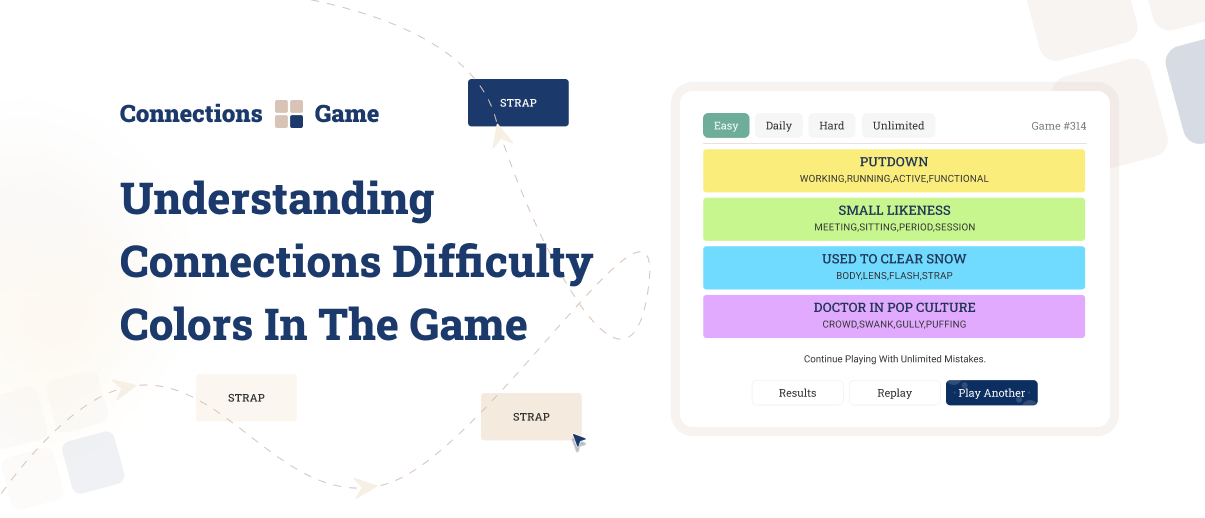
Last Updated: Apr 16, 2025
Did you know that the Connections game offers a unique way to challenge your word association skills? This game uses color-coded feedback to show how difficult each category is. Each category in the game has a specific color, ranging from yellow to purple. These colors indicate how tough the challenge is.
Understanding these colors can help players plan their moves and tackle the game more effectively. In this blog, we will explore what each color means and how it relates to the difficulty of the categories in the game.
What is the Color-Coded System in Connections?
The goal of the Connections game is to group words based on what they have in common. The game has four difficulty levels, each represented by a different color. Yellow is the easiest, followed by blue, green, and purple, which is the most challenging. The players can plan their strategy from yellow to purple.
You can focus on easier categories first and save harder ones for later. This will make it easier for you to win the game. Let’s understand the Connections color difficulty.
Yellow (The Easiest Category)
In the Connections game, yellow is the easiest category because it contains simple words that most players are familiar with. This category includes common or well-known terms that are easy to link together.

Players use yellow categories to build confidence and gain momentum. This is because they make it less likely that they will run into complicated connections. It’s a great place to start because players can get a few easy points and set the tone for the rest of the game.
Often, basic themes like colors, days of the week, or famous animals are examples of yellow categories.
Green (Medium Level of Difficulty)
Green categories in this game represent a moderate level of difficulty. Even though they are still doable, they are a little harder than the yellow ones. Some words in these groups may need a little more thought or understanding to connect, but most players can still do them without much trouble.

The hardest thing about green categories is that the terms they use might be specific or less common. Players may see green categories with themes like historical events, famous people, or science ideas.
Blue (A Step Up in the Difficulty)
Blue categories are harder than green ones and require more thought. Most of the time, the words in blue are less common and harder to link. They might be more in-depth than what you’ll find in green and cover things like advanced science history or art. These groups make you think more deeply and create more creative connections.

Before you go after blue groups, look for connections that are easy to tackle. Next, think of connections that are bigger or less clear. If you are stuck, take a break and return later to see if new connections become clear.
Purple (The Most Challenging Category)
Purple is the difficult category in Connections. The words are tricky and need more attention. These categories usually involve odd or abstract connections that are difficult to identify. They may ask you to connect words that appear unrelated at first.

Break down the words into smaller groups to handle purple categories and carefully consider each. Look for hidden or less obvious connections between them.
Conclusion
Connections is a popular game in which players group 16 words into four groups. The game provides a color-coded system, which helps players understand the game accurately. When players understand these colors, it's easy for them to plan their strategy. Yellow is the easiest category, and purple is the difficult one.
Knowing this system helps to solve the puzzle quickly and easily understand which word relates to which category.


